The right siding enhances a home's curb appeal, bolsters its structure and increases its value. Discover the type of siding that's best for your home.
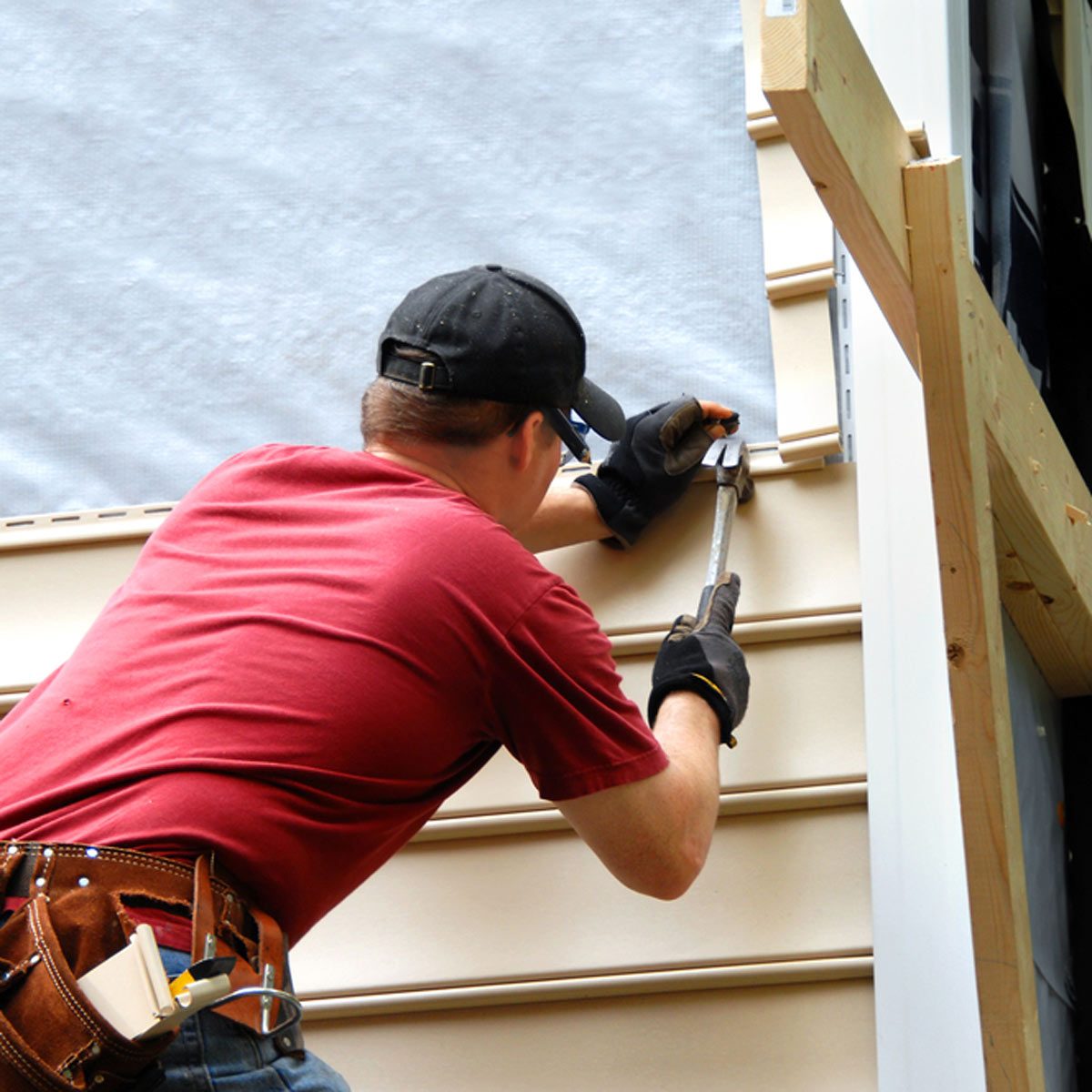
A Homeowner’s Guide to 9 Types of Siding for Houses

Siding doesn’t just make your home more attractive. It can also strengthen its structure by acting as an outer skin, providing protection from the elements and impacting long-term house maintenance costs. It’s important to choose siding that combines pleasing aesthetics with durability and reasonable maintenance to add maximum value to your home.
On This Page
How do I choose the right siding?
“With so many materials and profiles to choose from, deciding on exterior cladding for your home can be a challenge,” said Derby Building Products CEO Ralph Bruno. “Today’s savvy consumers demand low maintenance, while the architectural trends call for mixed-material styles with varied textures and colors. Finding the right balance between fit and function is crucial.”
Make sure to keep climate and weather in mind, said Modernize vice president Gregg Hicks.
“The Pacific Northwest experiences large amounts of rain, while the Southeast experiences strong storms, hurricanes and harsh sunlight,” said Hicks. “It’s important that homeowners select siding that can withstand their region’s elements and partner with a local professional who has local knowledge to determine the best siding for your home.”
The Most Common Types of Siding
To help you narrow your choices, here are the most common home siding options available when building or renovating.
Natural Wood Siding
Elegant, timeless and suitable for new or historic homes, natural wood siding continues to be one of the most popular options. Although the texture and curb appeal is hard to match, natural wood also is among the most expensive and high-maintenance siding choices for initial installation and long-term upkeep. Check out more types of wood siding.
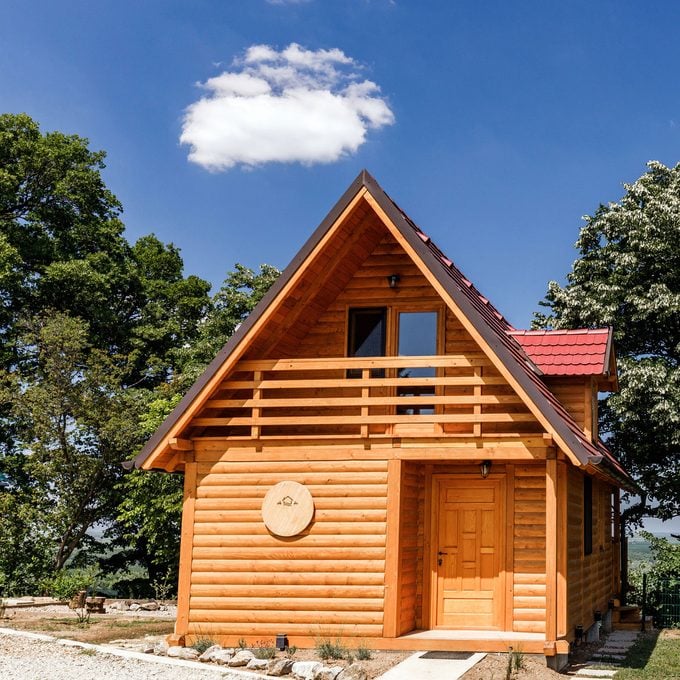
Pros:
- Evokes high-end appeal;
- Easy to change color by restaining or painting;
- Comes in various styles (bevel, tongue-and-groove, clapboard, shingle, shake, etc.);
- Eco-friendly.
Cons:
- Expensive relative to other options;
- High maintenance and can warp, rot or fade over time;
- Prone to pests.
Engineered Wood Siding
For the look of natural wood without long-term maintenance issues, engineered wood siding is an ideal option. This composite siding is generally made from a blend of wood fibers bound together by polymer or resin and then pressed to create the texture of real wood.
Engineered wood comes in lots of styles and colors. You can choose a product with baked-in color or one to paint yourself for a custom look. Learn how to estimate the cost to replace siding.
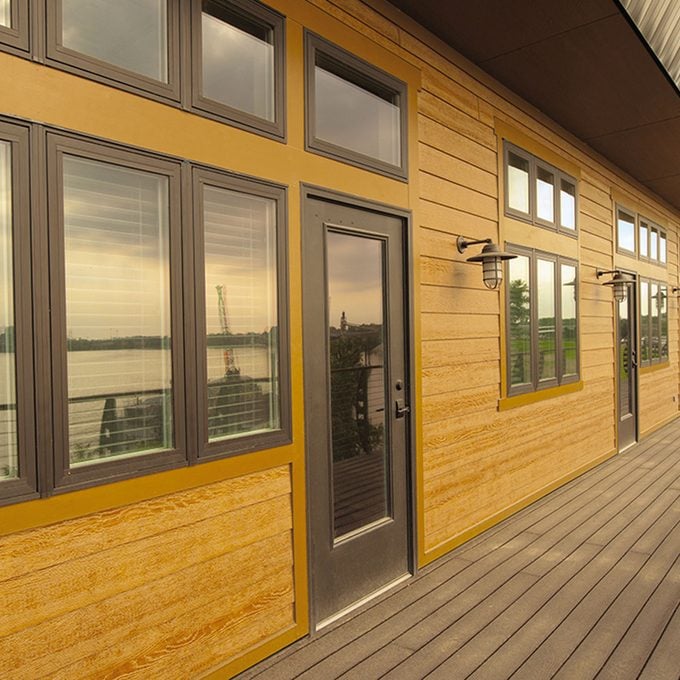
Pros:
- Similar curb appeal as natural wood with less costly installation and maintenance;
- Comes in panels or long boards for easy installation;
- Choice of styles (bevel, tongue-and-groove, clapboard, shingle, shake, etc.);
- Eco-friendly.
Cons:
- Can be susceptible to mold and mildew if moisture gets trapped behind it’
- Color or stain shade is permanent with some brands, so you can’t change the look in the future.
Vinyl Siding
You’d be hard-pressed to walk down a street in the U.S. without passing a house with vinyl siding.
One of the most popular options, this material is a crowd-pleaser for its budget price tag and endless choice of colors and styles, from classic horizontal “boards” to trendy square “shakes” or even scalloped panels. One of the easiest sidings to install and maintain vinyl siding can be a good option if you’re on a limited budget.
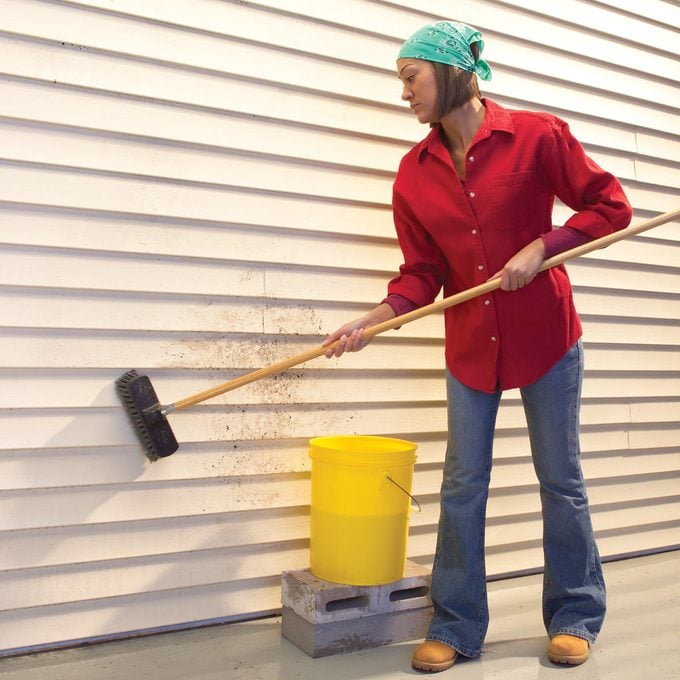
Pros:
- The most affordable option, with cost-effective installation and maintenance;
- Wide variety of styles and colors.
Cons:
- “Durability really depends on the maintenance applied and the local weather,” Hicks said;
- Low R-value with little insulating effect;
- Color is baked in and can’t be repainted, so you’re stuck with the color you choose;
- Known to trap moisture inside walls, leading to mold and decay;
- Can lower the value of your home, especially if used to cover the original wood siding;
- Contains PVC, so not eco-friendly during production or lifespan. Also hard to recycle.
Insulated Vinyl Siding
A step up from its stripped-down counterpart, insulated vinyl offers the benefits of basic vinyl siding plus insulation, which saves money on utility bills and boosts durability.
This upgraded vinyl option costs more but is still one of the most affordable siding choices. There are lots of colors and styles to choose from. Many brands have upped the quality with UV-resistant finishes and extra rigidity to withstand strong winds.
Pros:
- Relatively affordable, with cost-effective installation and maintenance;
- Insulation can help lower your energy bills and guard against ambient noise;
- The insulating foam inside the panels makes them less prone to dents and cracks than basic vinyl siding;
- Variety of colors and styles that mimic real wood.
Cons:
- Among the least durable siding types;
- Can’t be repainted if it fades or you want to update the color;
- Moisture can be trapped inside the walls, causing your house’s wood frame to decay;
- May lower your home’s value, especially on historic houses;
- PVC material is not eco-friendly and a challenge to recycle.
Steel or Aluminum Siding
Despite its high upfront cost, metal siding is an increasingly popular option due to its durability and little to no long-term maintenance.
The look of metal siding has improved significantly and many brands offer patterns and textures that faithfully mimic natural wood. With its natural resistance to the elements, mold, insects and fire, pre-painted metal siding can offer up to 20 years of maintenance-free service.
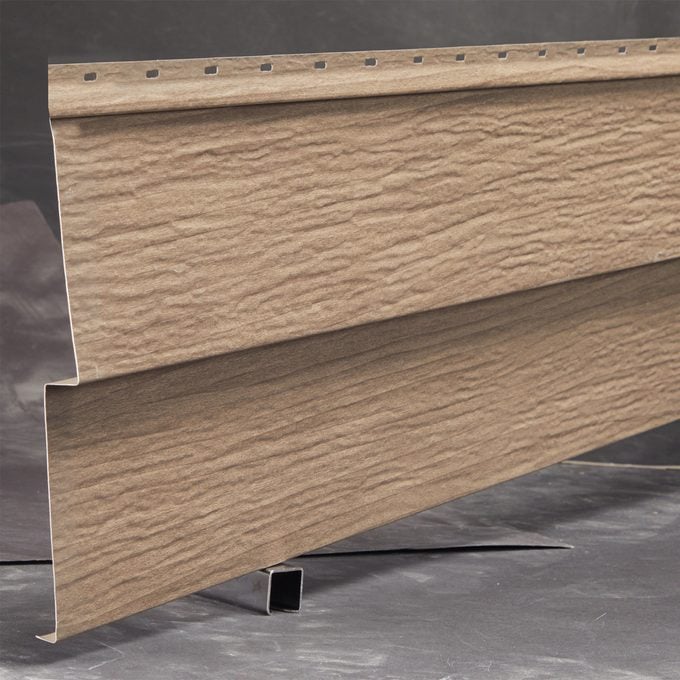
Pros:
- Aluminum siding is relatively inexpensive to purchase and install;
- Aluminum and steel are highly durable and low-maintenance;
- Eco-friendly (metal is recyclable.)
Cons:
- Steel siding is expensive to purchase and installation can be time-consuming, driving up the overall cost;
- Aluminum siding can dent and the color can fade or turn chalky over time;
- Steel siding is prone to rust.
- Neither aluminum nor steel siding are good insulators for temperature or noise.
Fiber Cement Siding
This high-quality composite siding was invented in the 1980s by the Australian company James Hardie Inc. and is so durable that some brands offer up to a 50-year warranty.
Fiber cement is made of wood pulp mixed with Portland cement as a binder. It pairs the perks of masonry with the aesthetic appeal of painted wood. Fire-, moisture- and pest-resistant and easy to maintain, fiber cement siding can be painted any color. It comes in various styles, from clapboards and panels to exterior trim.
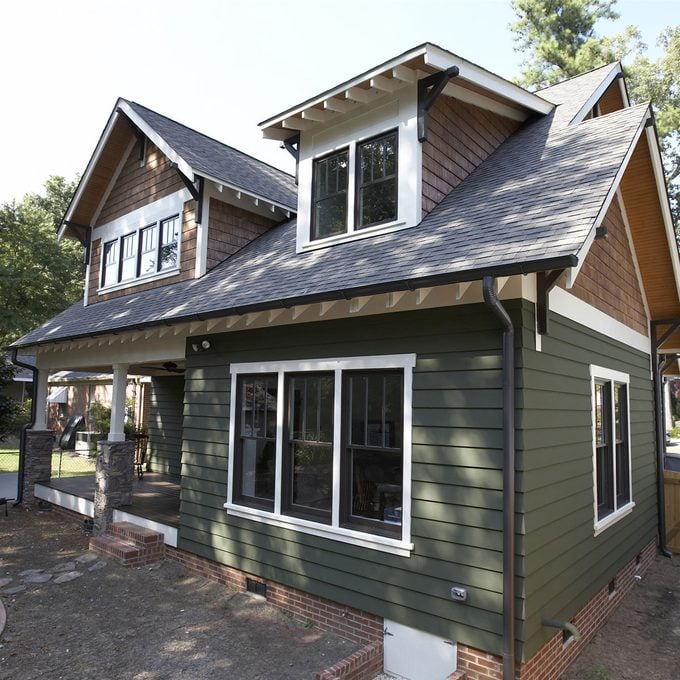
Pros:
- One of the most durable types of siding, resistant to everything from UV exposure to wind;
- Holds paint well — when painted by the manufacturer, can last up to 15 years;
- Environmentally neutral, breaking down into inert substances when removed.
Cons:
- Low R-value, so not a good insulator;
- More expensive than vinyl siding;
- Often must be installed by a professional crew, driving up the cost.
Stucco
Stucco has been around since ancient times. Its classic elegance, durability and customizable range of colors and textures make it an enduring favorite for exterior cladding.
Made with a mix of Portland cement, limestone, sand, water and additives that increase its strength and flexibility, modern stucco is generally applied in three coats and can last up for decades when properly maintained.
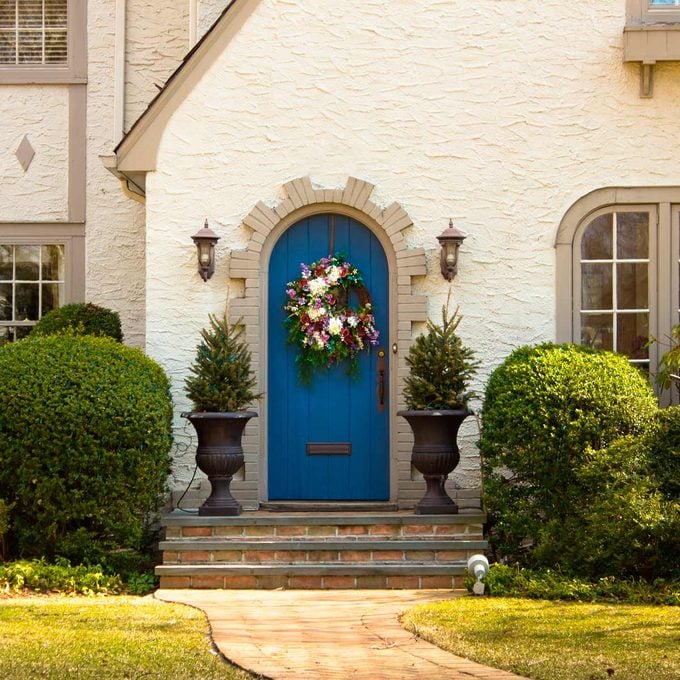
Pros:
- Stands up well to the elements and requires little maintenance;
- Can be tinted any color and the top layer can be smooth or textured;
- Resistant to fire and insects;
- Offers some insulation against temperature and noise.
Cons:
- Prone to cracking from earthquakes, or as a home settles or expands and contracts with temperature changes;
- Must be installed by experienced professionals to maximize lifespan;
- Subsequent paint jobs can trap moisture inside the stucco, causing mold or paint blistering.
Brick Veneer Siding
You may be surprised to learn that many brick houses are actually brick veneers, a type of siding that is cheaper and easier to install than the real thing but offers the same benefits. This type of home exterior became increasingly popular over the past few decades because it enhances the curb appeal and value of a home at a lower cost than real brick.
Pros:
- Durable, fireproof and low maintenance;
- The same insulating power of natural brick against heat and noise;
- Increases a home’s value.
Cons:
- Among the most expensive options;
- Takes longer to install than other types of siding and may need mortar joint repair in the future;
- May require a foundation assessment to evaluate suitability.
Stone Veneer Siding
Like brick veneer, stone veneer offers the value-boosting elegance and durability of its natural counterpart but at a more affordable price. Most stone veneer siding is made of lightweight concrete or clay mixed with polymers for strength and pigments to give the finished product the appearance of natural stone.
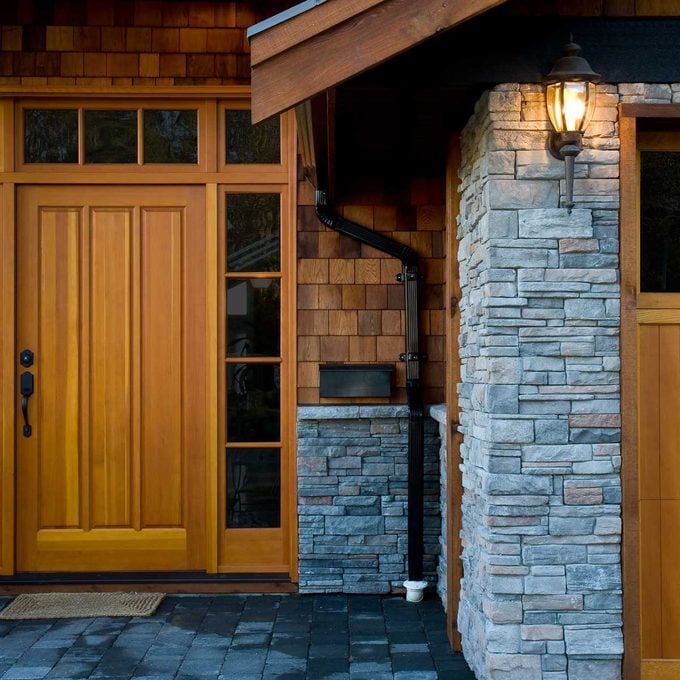
Pros:
- Lighter, more affordable and faster to install than real stone;
- Low maintenance, needing only occasional mortar-joint repair;
- Easier than real stone to install because specialized masonry skills are not required;
- Comes in various styles and colors and adds an appealing texture to exteriors.
Cons:
- Mortar can crack from earthquakes, as a home settles or expands and contracts with temperature changes, heavy traffic or moisture infiltration that freezes;
- Improper installation can allow moisture to get behind the panels and cause rot and mold;
- Lower-quality stone veneer is sometimes painted rather than pigmented, so it can fade over time.




















